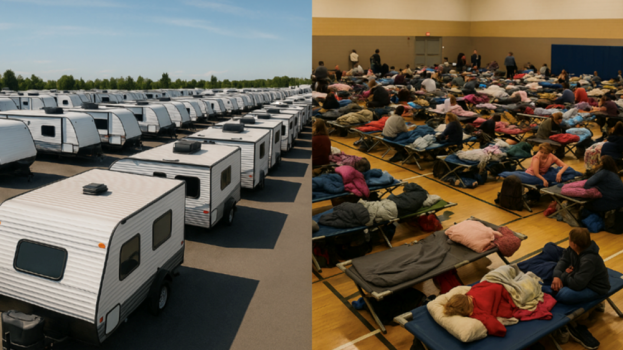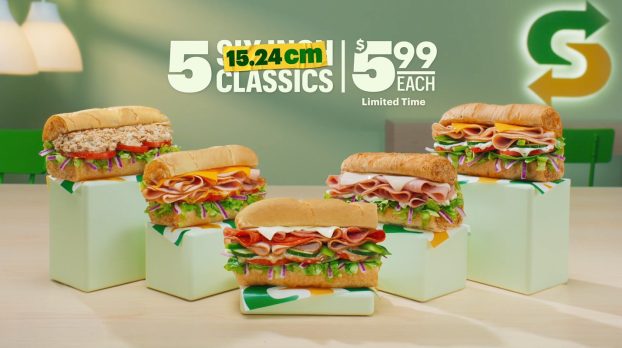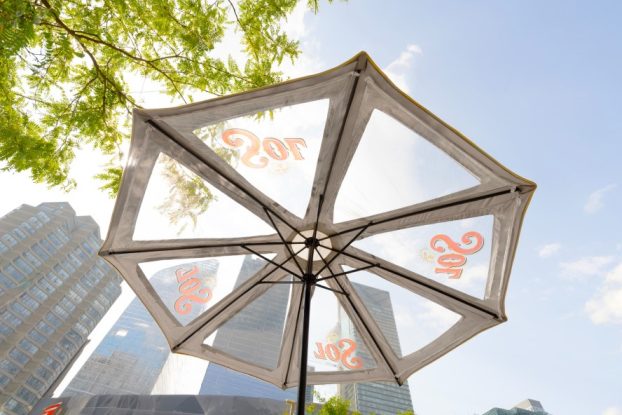This feature was originally published in the 2022 Winter issue of strategy magazine
By Will Novosedlik
It’s a coincidence that a brand as American as McDonald’s should arrive on our shores at the most Canadian of moments: our centennial year, 1967.
As George Cohon, McDonald’s Canada founder, put it: “We didn’t know a soul, we didn’t have much money and people didn’t know who we were. McDonald’s then was far from being the household word it is today.”
Apparently, the launch was met with a lukewarm response. Perhaps we were too preoccupied with celebrating our 100th birthday, or too distracted by the excitement of Expo 67. However, in a move to establish some much-needed affinity, McDonald’s founder Ray Kroc approved the addition of the maple leaf to the Golden Arches, something that has never been done anywhere else. If that gesture was Kroc’s way of recognizing that our two countries are different, the evolution of McDonald’s Canada over the last 55 years would set out to prove it.
Canada tells its own story
When taking the Canadian CMO role in 2014 (of which she held until early 2021), Antoinette Benoit acknowledged in an interview with strategy that there was a preconceived notion that McDonald’s was a faceless, international corporate behemoth.
That’s why the brand has been so laser-focused on building a local narrative, with campaigns such as “Welcome to McDonald’s” in 2015 that told the stories of Canadian customers and staff.
It’s also built a strong profile in Quebec through a continuous sponsorship of one of the country’s most iconic brands: the Montreal Canadiens.
The success of its Canada-focused strategy is borne out by the numbers.
Around 2.5 million guests visit 1,400 McDonald’s restaurants across Canada every day. Through its local franchisees, the QSR employs 90,000 Canadians coast-to-coast and has created more than 200,000 jobs, generating almost $4.5 billion in local annual economic activity. It injects approximately $4.2 million into local Canadian economies every day and $130 million in corporate income taxes annually. It’s safe to say that, in Canada, McDonald’s is no small potatoes.
Alyssa Buetikofer, recently appointed to replace Benoit as CMO, is committed to keeping it that way. Says Buetikofer, “As a brand, we’re focused on driving a meaningful connection with consumers. To do that we need to make sure that the stories we tell and the campaigns we bring to life are relevant to Canadians. If what we do here is picked up by other markets, that’s icing on the cake.”

A leader among markets
The Canadian brand’s 55-year history has seen a number of firsts. Since the invention of the McFlurry in 1995 by franchisee Ron McLellan in Bathurst, NB, many other Canadian ideas have been successful enough to be adopted around the world.
Just look to the early 2000s when McDonald’s – the home of the world’s most famous hamburger – saw its fortunes reverse after 47 years of growth. In December 2002, the global brand reported its first-ever net quarterly loss of $343.8 million, compared with a profit of $271 million for fiscal 2001. The loss was more than four times greater than what had been projected. Global CEO Jack Greenberg announced the bad news, and promptly retired.
The reasons for this setback were many. For one thing, pundits agreed that it had maxed out its markets. In Canada, for example, it had grown from one store in 1967 to 1,300 in 2002, and would add only 100 stores over the next twenty years, reducing its annual average retail expansion rate from 37% to 5%. Others cited changing demographics and increased competition. But the main culprit was simply that people’s tastes were changing, mostly driven by health concerns.
McDonald’s Canada, however, had the foresight to respond to changing consumer preferences by adding salads and wraps to its menu before any losses were counted. Trial of “Lighter Choices,” which was launched in 2002, was a big success. By the time the brand introduced its memorable “I’m lovin’ it” campaign in 2004, McDonald’s Canada was enjoying a 58% increase in trials of its health-focused menu. Lighter Choices was so successful that it was picked up by the U.S. in 2003.
Beyond introducing unique product offerings, the brand in Canada also targeted kids, moms with kids, and young adults. Instead of trying to be everything for everyone, it used sports, music and fashion to appeal to the latter demographic, leveraging hockey star Wayne Gretzky, sponsoring the Olympics and offering free music through its Big Mac Meal Tracks promotion.
Canada’s performance during this period made it a leader among markets. While the global brand saw a decrease in sales of 3.7% in March 2003, after monthly declines all through 2002, Canada saw the reverse: 2% growth in sales in 2002 and 9% growth during 2003. It wouldn’t be the last time Canada showed the way.

Transparency and sustainability
A part of the demographic shift towards healthier menu items in the early 2000s reflected a growing concern over the negative effects of fatty food and sugary drinks, with schools in the U.S. getting rid of soft drink vending machines and considering banning fatty snacks. These concerns prompted class action suits filed against McDonald’s for promoting obesity and other health problems, while hospitals began removing McDonald’s franchises.
While the brand introduced healthier items in response to these concerns, the online rumour mill still roiled with questions about the contents of its products. McDonald’s Canada took steps to address the problem.
It began in 2011 with its All-Access Moms program that gave four Canadian moms a behind-the-scenes look at how the company operates. The participants were then asked to share what they learned on their blogs and social channels.
But it really put its feet in the fire with the 2012 launch of the “Our Food, Your Questions” microsite, where anyone could ask the brand anything they wanted to know about how its products are made. With the help of Tribal Worldwide (then known as Tribal DDB), answers were made available in real-time so they could be easily shared on social media. The brand created 15 ads with responses in English and French, answering questions about everything from how the food is photographed to how its meat is processed.
The results were phenomenal. They expected 3,000 inquiries, but got 15,000. More than 1.6 million people spent an average of five minutes on the site. Questions and answers were shared six million times, with a global reach of more than 83 billion impressions. Almost 600 news outlets picked it up and it had a PR reach of more than 132 million impressions. Tribal Worldwide and McDonald’s won the Grand Prix at AToMiC and Best of the Best at the CMAs in 2013. The platform was subsequently reprised in markets around the world.
The next chapter in the quest for transparency was to connect consumers to the farmers from whom McDonald’s Canada sourced its ingredients. The “Not Without Canadian Farmers” campaign (also developed by Tribal in 2015) depicted images of McDonald’s products, with a piece of food that came from a Canadian farmer removed from the image. Later that year, the Cossette-created “Great Canadian Taste Adventure” campaign featured a rotating roster of limited-time menu items with ingredients sourced from different regions of the country. And in 2020, Cossette helped develop “Back to the Farm,” showing “the future” of Canadian sustainable beef ranching by speaking to young cattle farmers in southern Alberta.

To keep the company’s commitment to transparency going, in 2019, McDonald’s and Cossette created the “see-through kitchen,” an activation that saw the conversion of a shipping container into a glass-clad McDonald’s kitchen, allowing passersby to see how their favourite menu items are made.
These campaigns demonstrated that the brand’s commitment to transparency was not just one campaign long. Once again, McDonald’s Canada showed leadership, not only among the larger McDonald’s family but also the QSR industry in general – because, from transparency, it’s a small step to sustainability.
In a 2018 Greenpeace audit of trash collected from Canadian shorelines, Nestlé, Tim Hortons, PepsiCo, Coca-Cola and McDonald’s, were the worst offenders. So, in 2019, McDonald’s Canada began to experiment with “lightweight” coffee cups by removing one layer of paper from its outer surface – a move that eliminated more than 123 tons of paper. The cups also feature an aqueous coating that’s acceptable in recycling streams. The effort extended to wooden cutlery and stir sticks, paper straws and napkins produced with recycled fibers. It’s all part of the company’s goal of sourcing 100% of its guest packaging from renewable and/or recycled sources by 2025.
Looking ahead
Buetikofer inherits a brand that has become one of the most highly recognized in Canada. It’s also one of the most active from a communications perspective, running 50 annual campaigns led by Cossette (creative), OMD (media) and Weber Shandwick (PR). While Buetikofer’s got a solid foundation to build on, she will be one of the busiest CMOs.
“We want to continue to connect with consumers through our campaigns, and we want to do the same thing through the channels that we’re using and how we’re using them,” says Buetikofer. “You’re certainly starting to see more use of social channels and different digital channels, video activations and static and display activations. You can expect to see much more of that in the future.”
The pandemic demonstrated that there is still strong brand love. “We learned during the pandemic that consumers do love our core food and our core icons, and there’s comfort in that,” continues Buetikofer. “We learned that the foundation we have with some of those core icons and equities remains positive.” A brand couldn’t hope for more.
From products to people
One of the more engaging initiatives in recent years was the 2019 “Friends Wanted” recruitment campaign. Even though 75% of McDonald’s employees are under 25, research revealed that many in this demographic would not even consider working at the QSR for fear of being judged poorly by their friends.
To increase applications, McDonald’s worked with its long-time AOR Cossette to try to understand how they could overcome this barrier. Two insights emerged from research. One, youth want most from their first job is to work with friends. And two, what employees like most about McDonald’s is their relationship with their co-workers. So the brand created an integrated campaign that encouraged friends to apply together, interview together and work together.
Again, the results were significant. The first month of the campaign saw more than 75,000 new applicants. Facebook brand lift performance tracking for the campaign was the highest ever seen for any brand in Canada. Job interest increased 42%, recommendations jumped 29%, ad recall was +30.4 pts (216% above norm), and market awareness rose 154%.
Loyalty is digital
During her seven successful years as CMO at McDonald’s Canada, Benoit left a strong legacy for her successor, Alyssa Buetikofer. Beyond the many integrated campaigns she led, Benoit ushered the brand into the digital age, increasing its proportion of marketing spend from 15% of the budget in 2014 to 50% in 2021.
In late 2021 McDonald’s Canada launched MyMcDonald’s Rewards, an app that allows customers to earn points on every order for free rewards like a Big Mac, McFlurry, Premium Roast Coffee or McMuffin. The digital upgrade of the sticker-based McCafe Mobile Rewards program is the latest in a long line of programs designed to keep brand love alive.
According to Buetikofer, the brand’s strategic focus continues to be on digital growth. “We are absolutely doubling down on the ‘three D’s’: digital, delivery and drive-through. We’re focused on convenience, personalization and allowing customers to order through the channels that make sense for them.”
Although the pandemic certainly accelerated the use of delivery and drive-through channels, Benoit had previously built a digital toolbox with which to encourage consumer engagement, both in terms of marketing communications and customer experience. An example is the 2019 “Snapchat Door,” created to increase awareness and trial of the national launch of McDelivery via Uber Eats and SkipTheDishes. The augmented reality program allowed customers to scan transit-shelter ads with their phone and view a 3D version of the door on their devices. A hand appeared and knocked on the virtual door, which opened to reveal a $5 coupon.
Snapchat and Twitch have been go-to platforms for the brand in recent years. To celebrate National French Fry Day in 2018, the brand gave customers the opportunity to share their love for fries by placing a drive-thru speaker at the top of Grouse Mountain in Vancouver. The “Friestream” activation incorporated the McDonald’s mobile app by live-streaming a broadcast of social media comments and videos from people across the country. The campaign engaged over 800,000 viewers and generated over 40 million media impressions.
The longstanding annual Monopoly contest is another example of how the brand is using digital to drive loyalty, with many components of the contest digitized to make it accessible through the McDonald’s app. In the 2021 edition, players were entered into a weekly $5,000 draw when they placed a mobile order, scanned their McDonald’s Rewards card or redeemed an offer on the McDonald’s app.

























